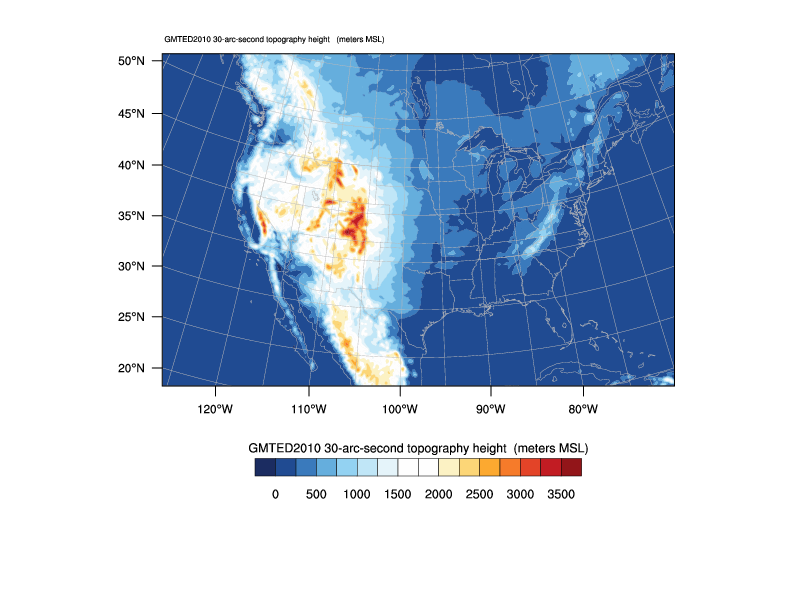
WRF Forecast Testing Extensive testing and evaluation of various physics options have been performed to ensure these schemes can realistically describe physical and dynamical processes in the atmosphere. The tested schemes pull heavily from the new contributions to the released version, while several suites of physics options are also included to allow comparisons with the package whose behavior is more thoroughly known. The WRF ARW tests are conducted for the winter period from February 1 to February 28, 2017, and for the spring period from May 1 to May 28 2017. - Domain Configuration: CONUS domain with 15-km resolution, as shown in figure below.-Grid Structure: 415 x 325 horizontal grid points 40 vertical levels with model top at 30 hPa Lambert-Conformal map projection - Initial and boundary conditions: GFS 0.25 degree GFS analyses are used to provide the initial and boundary conditions for each of the testing runs. Each single case is initialized daily at 0000UTC and run for 48-hour forecast. For both spring and winter, 26 cases are conducted for testing and evaluation. - Physics options A "baseline" test with several well-tested physics options is conducted using both WRFV4.4 and WRFV4.5 for comparison to ensure the performance of WRFV4.5 is consistent with that of WRFV4.4. The "baseline" physics options include: RRTMG shortwave and longwave radiation schemes, Tiedtke cumulus scheme, YSU PBL scheme, Noah surface scheme, WSM5 microphsyics scheme All the new physics options incorporated into WRFV4.5 are tested and compared with the baseline test. For each new physics option, 26 cases are tested for the spring and winter, respectivley. New and modified physics options as well as some commonly used suites that have been tested are listed below: (1) The new package to compute two-moment prognostics for graupel/hail in Thompson scheme (2) The new k-epsilon-theta PBL scheme (3) Updated P3 scheme (4) Scale-aware Tiedtke scheme (5) Updated Mynn-EDMF scheme (6) Tropical Suite (7) Conus Suite (8) Conus Suite but run with NoahMP LSM scheme (9) Options used for climate simulation (10) Comparisn of NoahMP-V4.4 and NoahMP-V4.5 - Verification WRF results are compared with 0.25-degree GFS surface and upper air analysis. Domain averaged BIAS and RMSE are calculated for conventional fields.